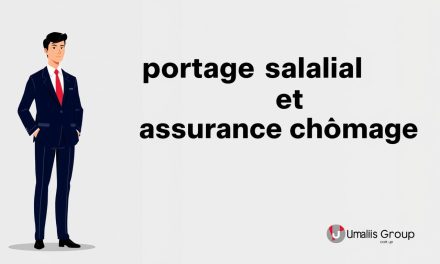Remember that relentless morning alarm? The one signaling another day of crowded commutes and fluorescent-lit cubicles? For years, many of us traded autonomy for the illusion of stability in traditional roles. Yet 1 in 5 U.S. workers faced layoffs last year (Bureau of Labor Statistics), proving even « secure » jobs carry hidden risks.
Now picture this: shaping your schedule around life’s priorities, not the other way around. Freelancing offers freedom, but questions linger. « Can I really build lasting stability without a single employer? » The answer isn’t just yes—it’s how modern professionals thrive.
MarketWatch reports 42% of full-time workers now diversify income through side projects. Why? Multiple revenue streams create safety nets. Imagine earning through client projects, digital products, and passive channels—all while choosing which hours align with your energy peaks.
This guide isn’t about chasing gigs. It’s about designing a career fortified against uncertainty. You’ll learn to:
Table of Contents
Key Takeaways
- Transform short-term projects into recurring client partnerships
- Balance immediate income with long-term financial safety nets
- Apply corporate-level stability tactics to independent work
- Leverage time management systems used by top-earning freelancers
- Turn market shifts into opportunities rather than threats
We’ll combine hard data with real success stories—like the consultant who replaced her corporate salary within 18 months using these methods. Your independence doesn’t have to mean instability. Let’s build something enduring.
Understanding the Freelance Landscape
Picture two professionals: one tracks hours in an office, the other designs projects from a café. Traditional roles offer predictable paychecks but limit control over time and creative direction. Independent work flips this dynamic—you trade stability for autonomy, a choice requiring strategic navigation.
Structure Versus Self-Direction
Corporate positions provide built-in systems—HR handles benefits, accounting manages taxes. When you work independently, these tasks become your responsibility. A 2023 study revealed 68% of self-employed professionals spend 15+ hours monthly on administrative duties alone.
Predictability in a Shifting Market
Full-time roles promise steady income but carry hidden risks. Last year’s layoffs affected 23% of tech workers despite company profits. Freelancers face different challenges—project droughts can strike unexpectedly. The solution lies in structuring client relationships to ensure recurring work while diversifying revenue streams.
Consider a graphic designer who lost two major clients last quarter. By maintaining three ongoing contracts and licensing digital templates, they retained 80% of their usual income. This hybrid approach balances immediate earnings with long-term safeguards.
Mastering Freelance Job Security

Imagine a thriving independent career where 75% of your income comes from clients who proactively recommend your services. This reality emerges when you strategically cultivate diverse partnerships and nurture professional connections. Research shows specialists with 5+ active collaborators experience 34% fewer income gaps annually.
Building Diverse Client Relationships
Limit reliance on any single income source by working across industries. A web developer might serve:
- E-commerce startups needing custom plugins
- Nonprofits optimizing donation platforms
- Educational institutions creating interactive tools
This approach mirrors the success of Paris-based designer Léa Martin, who maintains 12 ongoing contracts through structured client relationships. She dedicates 20 minutes weekly to each partner for progress updates and needs assessments.
Establishing a Reliable Network
Your professional community becomes your talent pipeline. Join industry-specific mastermind groups or co-working collectives where referrals flow naturally. Marketing strategist Antoine Dubois attributes 40% of his projects to peer recommendations from his 3-year involvement in a digital nomad network.
Prioritize value exchange in every interaction. Share relevant resources with contacts before requesting introductions. This builds trust and positions you as a connector rather than a constant requester. Over time, these cultivated relationships form an organic safety net during slower work periods.
Practical Strategies for Consistent Freelance Income
What separates thriving independent professionals from those chasing deadlines? The answer lies in intentional systems that turn unpredictable work into reliable cash flow. Unlike traditional roles with fixed pay cycles, successful self-employed experts design their own stability.
Creating Multiple Income Streams
Diversification isn’t just for investors. A content writer might combine:
- Retainer agreements with marketing agencies
- E-book sales on industry-specific platforms
- Workshops teaching AI-assisted writing techniques
Take inspiration from Barcelona-based developer Marco Silva. He allocates 60% of his time to client projects and 40% to maintaining a SaaS tool that generates passive revenue. This mix cushions against project gaps while growing long-term wealth.
Managing Financial Safety Nets and Benefits
Treat your business like a corporation. Automatically transfer 15% of every payment to separate accounts:
- Emergency fund (6 months’ expenses)
- Tax obligations
- Paid time-off pool
Join professional collectives offering group health insurance and retirement plans. Many French independents use portage salarial structures to access employee benefits while maintaining autonomy.
Leveraging Technology and Marketing Tools
Automation transforms time management. Social media manager Élodie Bertrand tripled her client base using:
- CRM software tracking 200+ leads
- Batch-content creation with AI assistants
- Automated invoicing through platforms like Indy
“Scheduling posts three months ahead freed up 10 weekly hours for client acquisition,” she notes. Tools become force multipliers when aligned with clear income goals.
Balancing the Benefits: Freelancing Versus Full-Time Work

What defines true career stability in today’s evolving work landscape? While traditional roles offer structured benefits, modern professionals increasingly value control over their schedules and income diversity. Let’s examine how both paths address core needs for security and personal fulfillment.
Evaluating Security and Stability Trade-Offs
Full-time positions provide immediate perks:
| Aspect | Corporate Role | Independent Work |
|---|---|---|
| Income Source | Single employer | Multiple clients |
| Benefits | Health insurance, PTO | Self-managed plans |
| Flexibility | Fixed schedule | Custom hours |
| Risk Management | Company-dependent | Diversified revenue |
“My corporate benefits felt secure until layoffs hit,” shares former HR manager Camille Rousseau, now successfully self-employed. “Now I combine structured client relationships with health coverage through professional collectives.”
Maintaining Flexibility and Work-Life Balance
Independent professionals report 28% higher satisfaction in managing personal commitments according to recent EU labor studies. This autonomy proves vital for:
- Parents adjusting work around school schedules
- Caregivers supporting aging relatives
- Creative professionals needing variable project cycles
Digital marketer Sophie Lefèvre alternates between full-time contracts and solo projects. “I take corporate roles during economic dips, then freelance when needing more family time,” she explains. This hybrid approach lets workers adapt to changing life priorities.
Ultimately, career success depends on aligning work models with your current life phase and risk tolerance. Regular self-assessment ensures your chosen path continues serving both professional ambitions and personal well-being.
Conclusion
Building a sustainable career outside traditional structures requires strategic design, not chance. Professionals who diversify income through client projects, digital products, and collaborative partnerships create resilient foundations. 42% of full-time workers now blend multiple revenue streams according to MarketWatch data—a trend reshaping modern career stability.
Success stories like Paris-based designers and Barcelona developers prove intentional systems trump temporary gigs. They combine retainer agreements with passive income channels while maintaining emergency funds. For those considering structured transition planning, this approach reduces financial risks while preserving autonomy.
The true power lies in adaptability. Whether choosing corporate roles or independent work, professionals thrive by aligning choices with current life phases. Regular skills assessments and network cultivation ensure continuous growth without sacrificing personal priorities.
Your path to stability begins with informed decisions—balancing financial safeguards with creative freedom. As work models evolve, those who master self-direction while building safety nets will lead tomorrow’s professional landscape.
FAQ
How does freelancing differ from traditional employment?
Unlike salaried roles, independent professionals manage their own workload, set rates, and negotiate contracts directly. While traditional jobs offer predictable paychecks, self-employment requires proactive client acquisition and financial planning to maintain stability.
What’s the best way to handle inconsistent income?
Diversify your client base and develop recurring revenue streams like retainers or subscription services. Build an emergency fund covering 3–6 months of expenses, and use budgeting tools to track cash flow. This reduces reliance on single projects.
Can independent workers access benefits like health insurance?
Yes. Many join professional associations or use platforms offering group-rate benefits. Others invest in private plans or leverage spouse/partner coverage. Tax-advantaged accounts for retirement and healthcare expenses also help offset costs.
How do I balance flexibility with reliable work?
Set boundaries for availability and prioritize long-term partnerships over one-off gigs. Use project management tools to streamline tasks, and allocate time for both client work and business development. This ensures steady projects without burnout.
What tools help secure long-term clients?
CRM systems track communication and deadlines, while marketing automation nurtures leads. Portfolios showcasing niche expertise attract aligned partnerships. Regular check-ins and clear contracts also build trust, encouraging repeat collaborations.
Is full-time work safer than self-employment?
Not necessarily. Layoffs and market shifts affect traditional roles too. Professionals with diversified income streams and adaptable skills often achieve comparable stability—with greater control over their growth and schedule.





